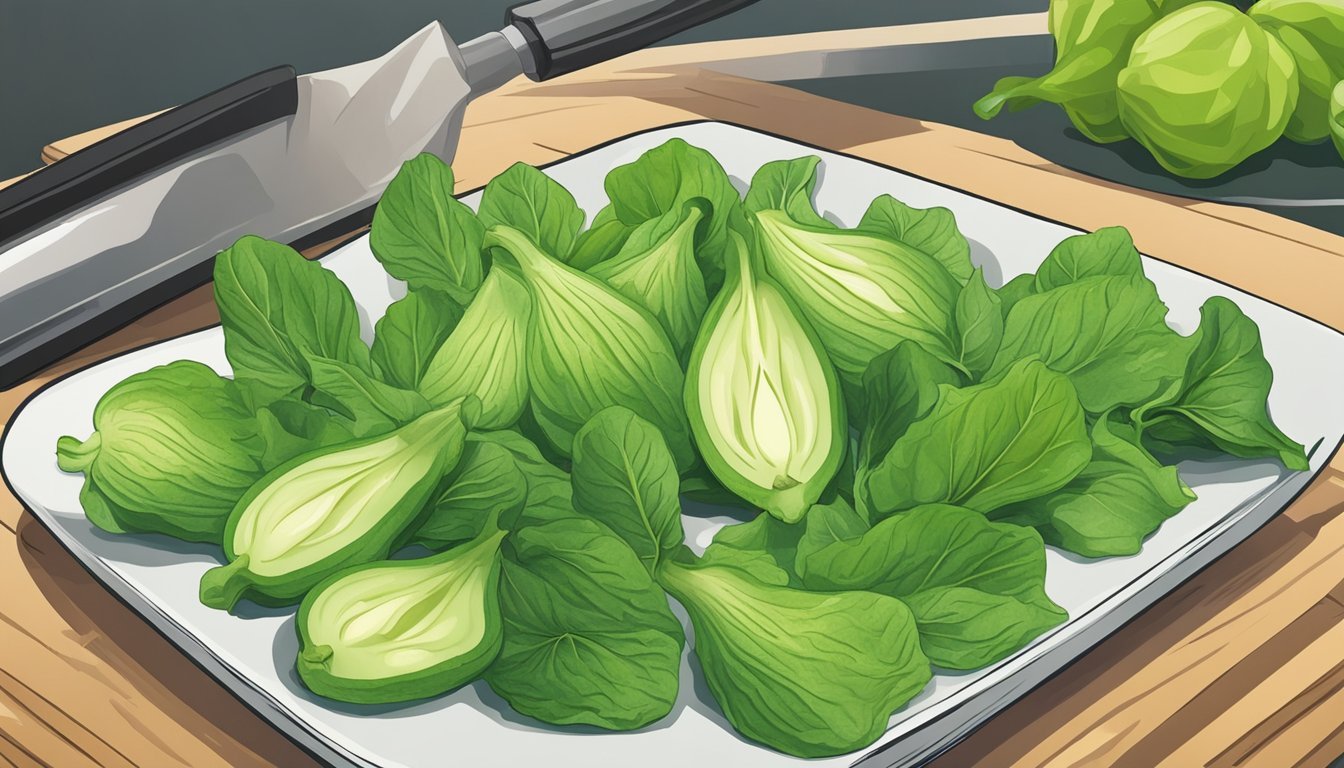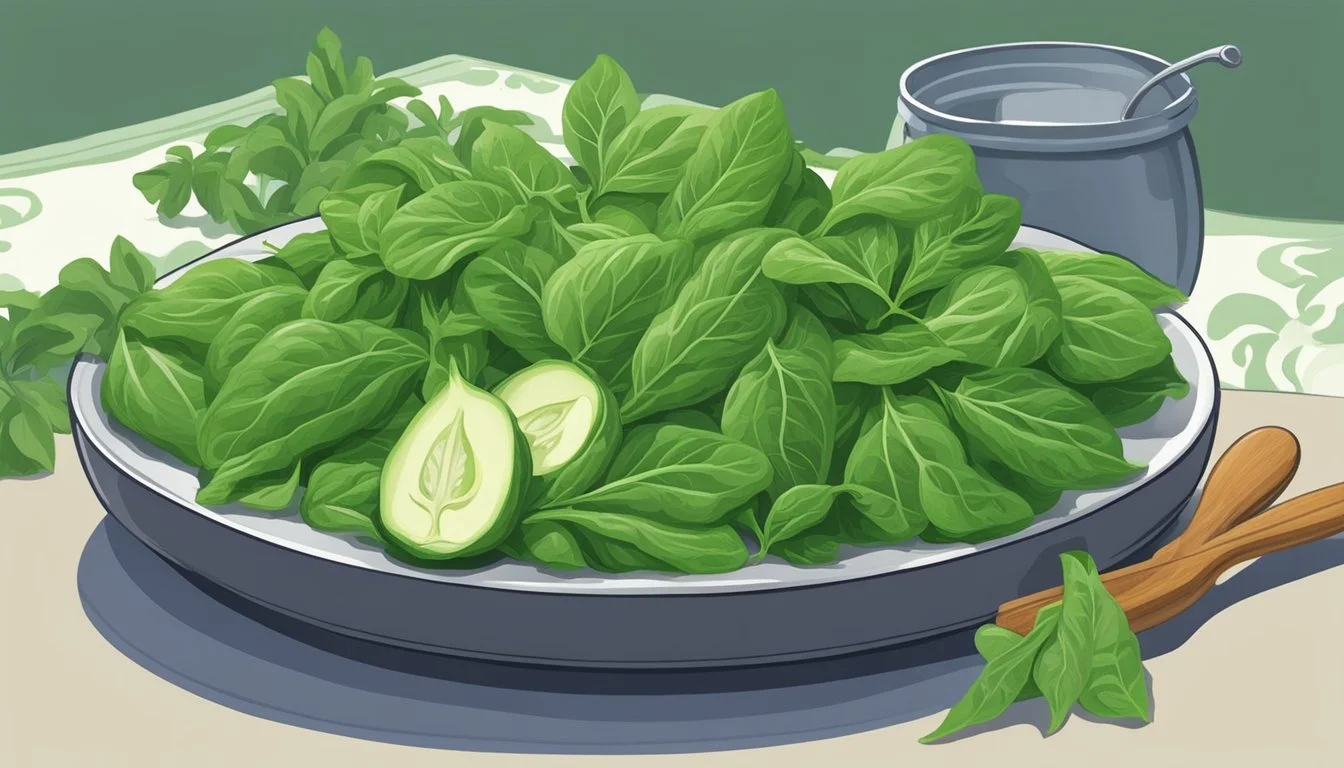Chayote Greens Substitutes
Best Alternatives for Your Recipes
Finding the perfect substitutes for chayote greens can sometimes be challenging, given their unique texture and flavor. One reliable substitute for chayote greens is spinach, which offers a similar tender consistency and can be used in various dishes. Additionally, kale serves as an excellent alternative, providing a subtle bitterness that complements many recipes.
Swiss chard is another versatile substitute for chayote greens. Its slightly earthy flavor and soft leaves make it perfect for soups, sautés, and stir-fries. Unlike chayote greens, Swiss chard is readily available in most grocery stores, ensuring convenience.
For those seeking a slightly different taste profile, collard greens can also replace chayote greens effectively. They have a sturdier texture but become tender when cooked, fitting well into numerous culinary applications.
Identifying Chayote
Chayote, also known as vegetable pear or choko, is a versatile vegetable commonly found in tropical regions. It belongs to the gourd family and is often referred to by various names like mirliton, chocho, and christophene.
The chayote fruit is green and has a pear-like shape. Its texture is notable for being both crisp and firm. When describing its flavor, it's often characterized as mild, making it adaptable to many dishes.
Chayote grows on a climbing vine that can produce numerous fruits in a single season. This vine is a perennial plant, meaning it can live for more than two years and continues to bear fruit.
Nutritionally, chayote is a good source of vitamin C and fiber. It can be eaten raw, cooked, or even pickled, showcasing its versatility in culinary applications.
In various cultures, chayote is a staple ingredient due to its mild flavor and adaptability. From stews to salads, this vegetable can seamlessly integrate into many recipes.
Understanding Substitutes
When looking for substitutes for chayote greens, it's essential to consider both flavor and texture. Chayote greens have a light, refreshing taste that works well in various dishes, both raw and cooked.
Zucchini is a popular substitute. It is versatile and can be used in salads, soups, stews, and stir-fries. They add a similar mild flavor and texture that complements many recipes.
For those looking for a slightly different taste, spinach and kale can also work. These greens have a more robust flavor and can be sautéd or added to casseroles and stews. They maintain their texture well when cooked, offering a nutritious alternative.
Swiss chard is another good option due to its mildly sweet flavor. It can be used in both savory and sweet dishes, making it a versatile ingredient. Chop it up for soups or use it in stir-fries.
In salads, consider using arugula or watercress. These greens bring a peppery bite that differs from chayote greens but still provides a fresh and interesting flavor profile.
When experimenting with chayote greens substitutes, it's helpful to understand the specific culinary needs of your recipe. Whether you need something for a light salad or a hearty stew, there's an alternative out there ready to be explored.
Top Substitutes for Chayote
When seeking alternatives to chayote in cooking, several substitutes can replicate its textural similarity and light, refreshing flavor. These substitutes are versatile and can be used in various culinary applications, offering both nutritional value and delightful taste.
Zucchini and Summer Squash
Zucchini is a prime substitute for chayote due to its firm texture and mild, sweet flavor. It can be used in a range of dishes from stir-fries to salads. Summer squash varieties, such as yellow crookneck squash and pattypan squash, are similarly effective. Both zucchini and summer squash can be lightly cooked, roasted, or enjoyed raw. Their versatility and common availability make them a convenient choice for many recipes.
Nutritional value: Zucchini and summer squash are low in calories and high in vitamins A and C, making them healthy additions. Their culinary uses range from savory dishes to salads and can even be used in desserts.
Cucumber Varieties
Cucumber is another excellent chayote substitute, particularly in salads and raw preparations. With its crisp texture and juicy, refreshing quality, cucumber can be used in a 1:1 ratio with chayote. There are various cucumber varieties, such as English cucumbers and Persian cucumbers, which can be used interchangeably.
Cucumbers bring a light and crisp bite, ideal for cold dishes. They can also be pickled, adding a slightly tangy flavor to your meals. Nutritionally, cucumbers are hydrating and low-calorie, perfect for health-conscious recipes.
Other Squash Alternatives
Beyond zucchini and common summer squash, other squash varieties like cucuzza and bottle gourd, also known as loofah, serve well as chayote substitutes. These alternatives offer unique flavors and textures suitable for cooked dishes. Cucuzza, with its slightly nutty taste, works in stews and casseroles, providing a similar culinary experience to chayote.
These alternative squash varieties bring their own benefits. They are nutritious, providing vitamins and fiber, and can be seamlessly incorporated into many recipes where chayote would typically be used.
Unique Alternatives Outside of Squashes
For those seeking substitutes for chayote greens, non-squash vegetables can offer a variety of textures and flavors. Below are detailed options within root vegetables, melons, and exotic tropical choices, suitable for numerous culinary applications.
Root Vegetables & Tubers
Root vegetables and tubers can mimic the crunchy texture of chayote greens. Jicama offers a refreshing crispness and mild sweetness, making it ideal for salads and stir-fries. Celeriac and celery provide a nutty flavor perfect for soups and stews. Radish adds a peppery bite that contrasts well in dishes needing a sharp hint. Kohlrabi can be used raw or cooked, offering a versatile texture similar to chayote greens. Potatoes and green bell peppers are also versatile and bring different textures, suitable for various cooking methods.
Melons and Gourds
Melons and gourds can be excellent alternatives due to their high water content and subtle flavors. Cucumber stands out for its hydrating properties and can replace chayote greens in salads and cold dishes. Green papaya provides a mild taste and crunchy texture, often used in Asian cuisine for its crispness in salads. Bitter melon brings a distinct bitterness that can enhance soups and stir-fries. Fuzzy melon and custard marrow are versatile gourds, suitable for stews and soups, offering a subtle flavor that blends well with other ingredients. Cucuzza, also known as bottle gourd, can replicate chayote’s mild flavor and is effective in both raw and cooked forms.
Exotic and Tropical Choices
For bolder flavor profiles, exotic and tropical vegetables present unique alternatives to chayote greens. Bok choy is popular in Asian cuisine, offering a mild, sweet flavor with a crunchy texture, making it ideal for stir-fries and soups. Kohlrabi, known for its turnip-like taste and crunchy texture, can be used similarly to chayote greens. Jicama, often found in Latin American cuisine, is praised for its juicy crunch and mild sweetness, suitable for raw dishes and salads. Green papaya and bitter melon bring an exotic twist with their distinctive flavors, enhancing a variety of recipes with their crispness and unique taste.
Seasoning and Flavor Adjustment
When using substitutes for chayote greens, it is essential to tweak the seasoning and flavor to achieve comparable culinary results.
Seasonings such as garlic, butter, and cheese can significantly enhance the substitute's flavor profile. For instance, adding garlic can bring out a more robust flavor, while butter can impart a rich, buttery flavor.
Many substitutes, such as zucchini and green beans, have a mild flavor. This mildness allows for experimentation with various herbs and spices like cilantro, red pepper, and scallions to elevate the dish.
Sweet flavors found in chayote greens can be mimicked by using green papaya or cucumber. The sweet undertones pair well with nutrients like vitamin K, fiber, and protein in these alternatives.
Cooking methods vary according to the substitute. For example, green beans can be steamed or stir-fried, while zucchini can be sautéed with olive oil and the seasonings mentioned.
Adding ingredients like coconut milk can provide a creamy texture, enhancing the nutrients and flavors.
Simple extra virgin olive oil, seasoning with salt and pepper, and sprinkling grated cheese can completely transform the substitute into a delicious and nutritious option.
Substitutes are often loaded with antioxidants, minerals, and vitamins comparable to chayote greens. For a balanced dish, consider seasoning that complements both the flavor and nutritional value of the substitutes.
Remember to adjust the cooking times and methods to preserve these nutrients and achieve the best flavor outcome.
Health and Nutrition Considerations
Chayote greens, like their fruit counterpart, are celebrated for their nutritional value.
They are low in calories yet nutrient-rich, making them an excellent choice for those seeking to maintain a healthy diet without excessive calorie intake.
A notable benefit is their high dietary fiber content, which aids in digestion and helps maintain a healthy weight.
Vitamins play a significant role in chayote greens' nutritional profile. They are a good source of vitamin C, which supports the immune system and has antioxidant properties. Additionally, they contain vitamin K, which is essential for blood clotting and bone health.
Chayote greens also provide a range of minerals. They contain significant amounts of potassium, which is crucial for maintaining proper heart and muscle function.
Here is a simplified nutrition breakdown:
Nutrient Benefit Dietary Fiber Aids digestion, weight management Vitamin C Boosts immune system, antioxidants Vitamin K Supports blood clotting, bone health Potassium Essential for heart and muscle function
Including chayote greens in meals ensures a balanced intake of these important vitamins and minerals. Their unique combination of low calories and high nutrient density makes them a valuable addition to any diet focused on health and wellbeing.
Culinary Creativity with Substitutes
Experimenting with substitutes for chayote greens allows for a wide range of culinary possibilities.
Bok choy and spinach often serve as top alternatives due to their texture and mild flavors. They blend seamlessly into stir-fries, soups, and salads.
Besides the well-known greens, some unconventional choices like collard greens or kale bring unique nutritional benefits. Both are packed with vitamins and stand up well to various cooking methods, whether sautéed or steamed.
For those focusing on versatility, Swiss chard and mustard greens also work in both savory and sweet dishes. Swiss chard can be braised with coconut milk for a rich, creamy side dish. Mustard greens pair well with bacon for added depth and smokiness.
The keto community often turns to kale thanks to its low-carb profile and adaptability in dishes ranging from casseroles to smoothies.
Utilizing these substitutes not only ensures a similar taste and texture but also introduces new flavors into familiar recipes. The mingling of different ingredients fosters greater culinary creativity, enhancing both traditional and innovative dishes.
Conclusion
For those seeking alternatives to chayote greens, there are numerous substitutes that can meet your culinary needs. Each substitute has unique qualities that can bring fresh flavors and textures to your dishes.
Zucchini is a popular choice due to its availability and versatile application in various recipes.
For a crispy and mildly sweet option, consider using jicama.
Green bell peppers offer a burst of color and slight sweetness, making them visually appealing and tasty in casseroles and stews.
Bok choy provides a crunchy texture when raw and becomes tender when cooked, making it ideal for stir-fries and soups.
Cucuzza, also known as bottle gourd, introduces a mildly nutty flavor perfect for dishes that require cooked chayote.
Experimenting with these substitutes can lead to delightful new recipes. Feel free to mix and match based on availability and taste preferences.
Whether it's for stir-fries, soups, or salads, embracing these alternatives can enrich your cooking repertoire. By understanding the qualities of each substitute, you can make informed decisions that will enhance your meals.










